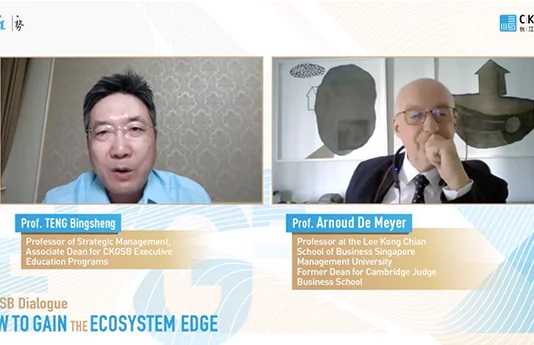Whether it’s the progress of technology, the rapid growth of the emerging markets, or the nature of capitalism to destroy and renew industries, the challenges of maturity have tended to be overlooked in recent years. Now, however, with many economies slowing down and the world’s population getting progressively grayer, this may need to change. In this series, we look at what it takes for businesses to navigate their middle years.
Given the current demographic trends, how companies should gear up to manage an older workforce.
Roughly 600 million people in the world are 65 or over, according to United Nations statistics. If present trends continue, that number should nearly double by 2035. UN demographers estimate that by 2050, Japan, South Korea, and Germany will have more people over 50 than under—and China won’t be very far behind: at that point, 46% of its population will be over 50.
If people continue to retire at the ages they currently do, the ratio of working to dependent people would rise precipitously. But that’s unlikely to happen: because the pension systems of most societies depend on current workers supporting current retirees, it doesn’t take a demographer to see that many of us will need to keep working into our 70s.
Viewed by traditional lights, this looks like a calamity for employers. Aren’t older people less healthy, less adaptable, more expensive and more ornery?
The truth is far different—and luckier. “In fact, [older workers] do better on virtually every aspect of job performance,” says Peter Cappelli, George W. Taylor Professor of Management at The Wharton School, director of Wharton’s Center for Human Relations, and co-author with Bill Novelli of Managing the Older Worker: How to Prepare for the New Organizational Order.
For the worker too, the necessity of working longer may also turn out to be a luckier break than it sounds. A growing number of studies have found that by and large, retirement is not good for the health. Many researchers have found that cognitive ability declines once people stop working. Others have found that levels of depression and anxiety increase sharply. All in all, the playwright Noel Coward seems to have been right when he decided that “work is much more fun than fun”.
No Country for Old Men
But the coming gray revolution won’t be entirely painless. Experts say that managers will need to rethink a lot of the way business has thought and dealt with older workers until now.
To some extent, older workers present a new challenge for managers. Modern management techniques were developed in the early 20th century, when more work was physically taxing and lives tended to be shorter. Later, as economies developed and life expectancies rose, a steady decline in retirement ages still kept work a game for the young and middle aged. Even today, the headquarters of some global firms look like a science fiction planet where people over 50 mysteriously disappear.
However, assuming that more gray heads are now more or less inevitable, what should managers do to get the most out of their older employees?
1. Understand their motivations. One good first step in managing older workers, experts say, is to recognize that older workers tend to have a somewhat different set of motivations driving them than their younger peers.
Jim Finkelstein, president and CEO of FutureSense, an organizational development firm, and co-author of Fuse: Making Sense of the New Cogenerational Workplace ™, says that older workers are generally motivated in one of three ways: the first are upset they need to keep working and want to retire as soon as possible. The second enjoy working, but are bored and want a new role. And a third are looking for jobs that are somehow more personally fulfilling—either closer to the customer or having some kind of larger significance for society or the firm.
2. Don’t think about the climb. The presence of older workers challenges conventional ideas of a career as a perpetual struggle for more authority. “The multigenerational workforce has become a bit of a problem, and I think it’s become a problem because in Western society at least, the underlying career strategy is always ‘up and over’, it’s always climbing the greasy pole, getting higher and higher,” says Sir Cary L. Cooper, Distinguished Professor of Organizational Psychology and Health at Lancaster University Management School.
Instead, managers should be more flexible about finding roles that suit the person now. “Why should it always be up and over? Why shouldn’t it be that they take a different role on as they get older? …if we keep the old system going, then you’re going to have 73-year-olds doing jobs that are extremely stressful, and probably not good for their health, when they probably should be letting younger people take over.”
“I think it would be better if organizations develop bilateral contracts with individuals and said, ‘Where do you want to go? What do you want to do?’ And they said, ‘Well, you know what I’d like to do? I’d like to work three days a week, I want to spend time with my grandkids or I have outside activities I want to do,’” Cooper says.
3. Listen. One common mistake among younger managers, in Finkelstein’s view, is not listening to older workers. Listening not only makes it easier to design the right jobs for them, but to see them as individuals with a unique set of strengths and weaknesses.
Cooper believes that companies will need managers who are good at this kind of empathy to manage multigenerational teams. “We have to select managers with more social and interpersonal skills, and train the managers we have on those as well,” he says.
Nor is this just a Western imperative, Cooper says. “People will say, oh yeah, but in China and India, they can get all the people they want, right? …I think that’s absolutely wrong, because it’s a competitive world,” he says. Even when there are more people available, training still costs money, he adds.
Considering individual abilities is important. Even areas that have a built-in advantage for youth such as technology may be less of a challenge for the old than commonly assumed. “You can’t assume that it’s because they can’t do it, it may be because you haven’t trained them to do it,” Cooper says.
In fact, older workers may have a head start on coping with the new: Cappelli says that the pace of technological change was actually faster in the 1960s. “We think it’s fast now because we are focusing on particular products we use, such as cell phones,” Cappelli says. “But in fact, the technical requirements of jobs haven’t changed much at all over the years, and most jobs still require a high school degree or less.”
4. Take a team view. Younger managers should try to focus on the task rather than the personalities, Finkelstein says. When making assignments, think about the strengths and weaknesses of every member of the team rather than their calendar ages. However, Finkelstein advises against being too deferential to older workers. “Don’t question your own authority. If you are the manager or leader, you are ultimately the decision maker. You can seek input but you don’t have to be so deferential that you’re not in charge,” he says.
“We’re terribly old-fashioned,” says Cooper. Ultimately, he argues that the key to managing older workers will be imagination—imagination in designing jobs with workers based on their individual talents and needs, imagination in treating them with enough sensitivity that a change in responsibilities is seen as a change and not a demotion, and imagination in seeing that the older workers still have something to offer the firm. “It’s all about flexibility,” he adds.
For part 1 in this series where we look at managing the mature company, please click here.




















